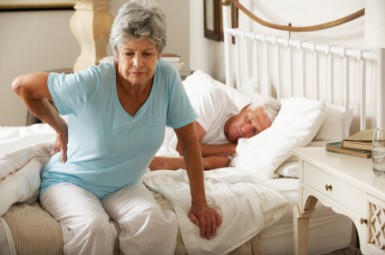 A few weeks ago I came across an article published in Age Ageing (2013;42(2):151-153), that I thought I would share with you. The article reported on Guidelines specifically surrounding pain management in older people. Research has shown that pain in older persons is both under-recognized and under-treated. This could potentially be attributed to the way older people sometimes approach pain. They sometimes believe that one should be stoic or that pain is a natural consequence of ageing, and therefore might not be as vocal about it as their younger counterparts. It could also be attributed to the misconceptions and poor education of professionals, who fail to recognize pain in older people as a serious problem.
A few weeks ago I came across an article published in Age Ageing (2013;42(2):151-153), that I thought I would share with you. The article reported on Guidelines specifically surrounding pain management in older people. Research has shown that pain in older persons is both under-recognized and under-treated. This could potentially be attributed to the way older people sometimes approach pain. They sometimes believe that one should be stoic or that pain is a natural consequence of ageing, and therefore might not be as vocal about it as their younger counterparts. It could also be attributed to the misconceptions and poor education of professionals, who fail to recognize pain in older people as a serious problem.
When it comes to pain, older people are different than younger individuals in the sense that many things happen to them: biological changes are part of the ageing process, there is often a co-existence of more than one medical condition leading to several different medications, frailty and psychosocial changes can also occur… All of these circumstances require special consideration when treating pain in older people.
The British Geriatric Society and the British Pain Society collaborated to produce the first UK guideline on the management of pain in older people. Allow me to summarize the essential points of the guideline…
When it comes to medications, lower doses should be used at the start of the course of treatment. The first line medication for pain of musculoskeletal origin (such as in arthritis) is paracetamol. Non steroidal anti-inflammatories (such as aspirin, ibuprofen etc) work but have side effects such as gastric bleeding and must be used carefully for short periods of time. Strong pain medications such as opioids may help in the short term. If there is need for long term opioid therapy, patients should be watched regularly. Constipation is a significant side effect and should be treated promptly. Certain drugs are useful for pain arising from damage of the nerves, spinal cord or brain (neuropathic pain), such as antiepileptics and tricyclic antidepressants, though side effects may limit their use.
“Interventional” therapies include injections and “minimally invasive” procedures. An example is the injection of corticosteroids for knee arthritis, which provides good short-term pain relief with very few complications and/or joint damage. Minimally invasive interventions include burning of the little nerves that innervate the small joints of the spine called facets (which are considered a source of chronic pain). This may help some people with back or neck pain. Injections of steroids inside the spinal canal (called epidural injections) may provide some benefit in patients with sciatica, particular if the doctors use special imaging machines to see where exactly the needle is going. Vertebroplasty and kyphoplasty (I have discussed these minimally invasive procedures in a previous paper) are not a sure thing as current data from the literature present conflicting results. In acute herpes zoster and post-herpetic neuralgia nerve blocks with local anesthetic and steroids may help. In general, such interventions should be considered particularly in the case of patients who have no success with medicated treatments.
In regards to psychological factors that influence the way people respond to and cope with chronic pain, there are certain techniques that can change beliefs and attitudes. Such techniques (an example is Cognitive Behavioural Therapy or CBT, and another one is Mindfullness Based Stress Reduction or MBSR) may decrease pain and improve mood and functionality in older persons and should be used as adjuncts to medications.
Exercise programs that include strengthening, flexibility and endurance exercises have been clearly shown to improve function, increase physical activity and reduce pain. There are many types of exercises and programs and should be customized to the ability and needs of an older person. Examples include aquafitness, walking, progressive resistance exercises, Tai Chi, Yoga etc.
Older people’s lives may also improve with the use of “assistive devices” (canes, wheelchairs, aids for personal hygiene etc). Assistive devices have been shown to support community living, reduce care costs, decrease functional decline, and also improve pain.
“Complementary” therapies such as acupuncture, transcutaneous electrical nerve stimulation known for short as TENS, massage etc., may help (usually in combination with other therapies) with no side effects.
Nevertheless, the authors of these guidelines pointed out that the literature was deficient in studies specifically targeting the management of chronic pain in older people and urged researchers to do more studies in this special population. They also stated that their goal was to increase the awareness of physicians that “there are more things than medications” that can treat chronic pain in older adults.
My hope is that the readers of this newsletter will also become aware of the many types of treatments that exist for chronic pain and be able to ask about them and discuss them with their own physicians.
Angela Mailis Gagnon, MD, MSc, FRCPC(PhysMed)
Director, Comprehensive Pain Program,
Senior Investigator, Krembil Neuroscience Centre
Toronto Western Hospital,
Chair ACTION Ontario www.actionontario.ca
Paper #61

